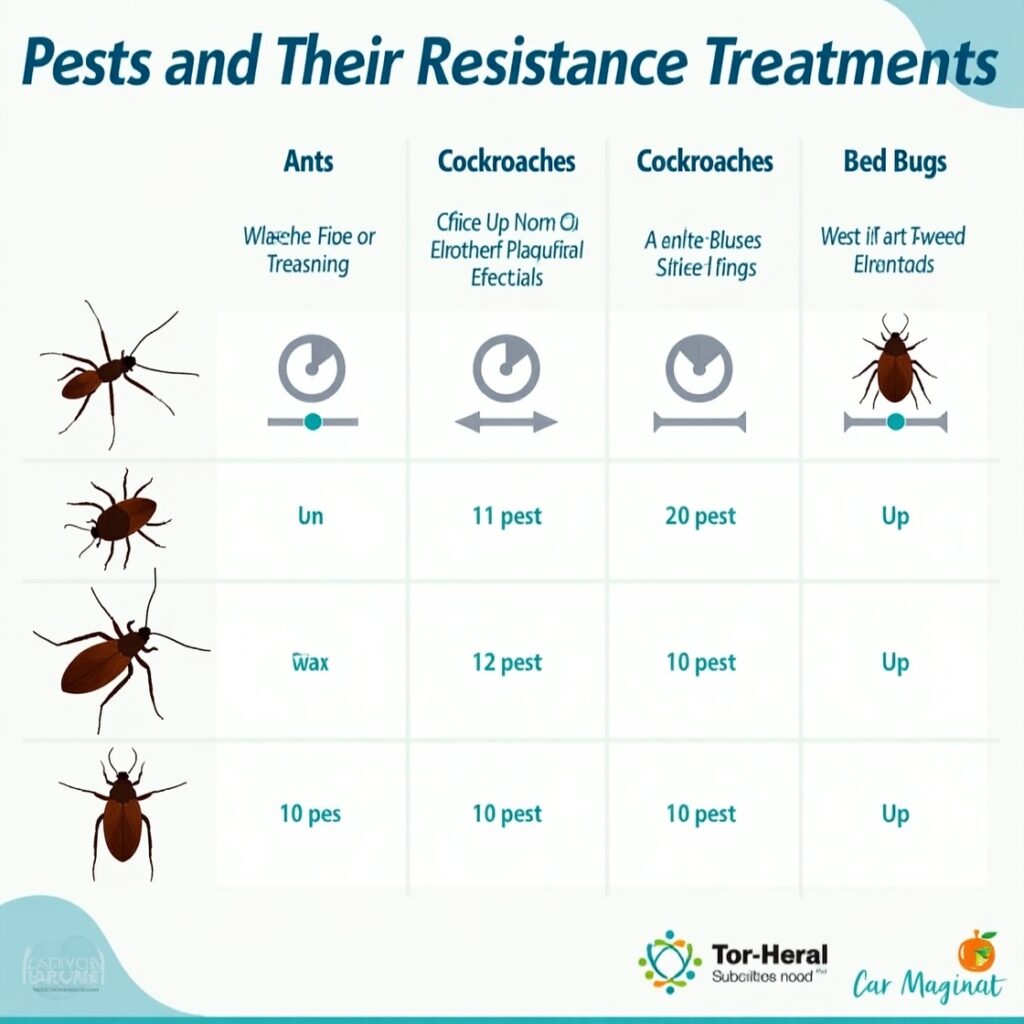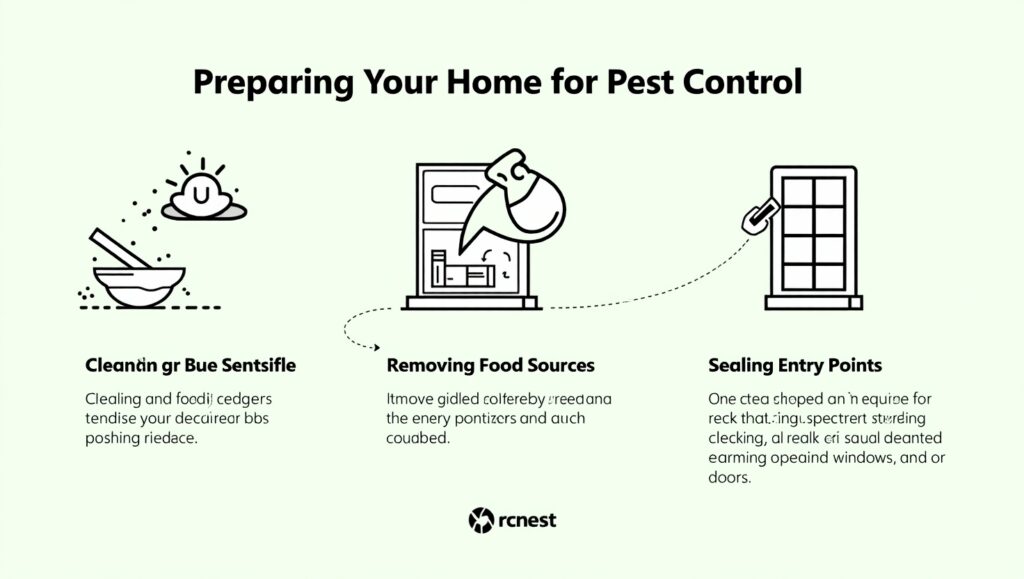When dealing with pest infestations, one of the most pressing questions homeowners have is how long it takes for bugs to die after pest control treatments. The answer varies significantly depending on the type of pest, the severity of the infestation, and the method of treatment used. For instance, bed bugs are notoriously difficult to eradicate and may require multiple treatments over several weeks, while cockroaches can be managed more quickly with the right chemicals.
Key Takeaways:
- Pest Type Matters: Different pests have varying lifespans after treatment.
- Treatment Methods: Chemicals, baits, and heat treatments affect bug survival differently.
- Environmental Factors: Temperature and humidity can influence treatment effectiveness.
How Pest Control Works
Pest control treatments are designed to target pests at their most vulnerable stages. Understanding the lifecycle of pests is crucial for effective pest control. Most pests go through four stages: egg, larva, pupa, and adult. Targeting pests during the larva or pupa stage is often most effective, as these stages are more susceptible to insecticides and biological controls3.
The Lifecycle of Pests
| Stage | Description | Vulnerability to Pest Control |
|---|---|---|
| Egg | Initial stage where pests are most protected. | Low |
| Larva | Active feeding stage; more susceptible to treatments. | High |
| Pupa | Non-feeding stage where transformation to adult occurs. | High |
| Adult | Reproductive stage; less vulnerable to treatments. | Low |
Factors Affecting Bug Elimination
Several factors influence how long it takes for bugs to die after pest control treatments. These include the type of pest, environmental conditions, and the effectiveness of the treatment method used.
Types of Pests and Their Resistance
Different pests have varying levels of resistance to treatments. For example:

- Ants: Treatment begins to work within 48 hours, but ants may remain for several weeks to several months depending on the property and extent of infestation.
- Cockroaches: Typically take two to eight weeks to fully eliminate, depending on the property and infestation level2.
- Bed Bugs: Heat treatments can kill bed bugs in about four hours, but multiple visits may be needed due to extensive clutter or unidentified nests.
| Pest Type | Time to Notice Results | Time for Complete Elimination |
|---|---|---|
| Ants | 48 hours | Several weeks to months |
| Cockroaches | 24-48 hours | 2-8 weeks |
| Bed Bugs | Immediate with heat | 4-6 weeks |
Environmental Conditions
Environmental conditions such as humidity, temperature, and clutter can significantly impact the effectiveness of pest control treatments. For example, high humidity can slow down the effectiveness of some chemicals, while extreme heat can accelerate the death of pests.
| Condition | Effect on Pest Control |
|---|---|
| High Humidity | Slows chemical effectiveness |
| Extreme Heat | Accelerates pest death |
| Clutter | Hides pests from treatment |
Chemical Formulations and Their Effectiveness
Pest control treatments can involve fast-acting or slow-release chemicals. Fast-acting chemicals provide immediate results but may not address hidden pests or eggs, while slow-release baits allow pests to return to their nests, spreading the poison and eventually eliminating the colony.
Comparison of Chemical Formulations
| Chemical Type | Effectiveness | Duration of Action |
|---|---|---|
| Fast-Acting | Immediate results | Short-term |
| Slow-Release | Long-term colony elimination | Weeks to months |
Post-Treatment Expectations
After pest control treatments, homeowners often notice an increase in bug activity as pests are flushed out of their hiding places. This is a sign that the treatment is working, as bugs become more active before dying off.
What to Expect After Treatment
- Increased Activity: Pests may become more active before dying off.
- Timeframe for Results: Varies by pest type, but typically noticeable within a few days to a week.
- Follow-Up Treatments: Often necessary to ensure complete elimination.
Tips for Homeowners
To maximize the effectiveness of pest control treatments:
- Cleanliness: Regular cleaning helps remove dead bugs and prevent re-infestation.
- Monitoring: Use traps and protective covers to monitor for remaining pests.
- Prevention: Seal entry points and maintain a clean environment to prevent future infestations.
| Tip | Benefit |
|---|---|
| Regular Cleaning | Removes dead bugs and prevents re-infestation |
| Monitoring Traps | Helps identify remaining pest activity |
| Seal Entry Points | Prevents future infestations |
Understanding these factors and strategies can help homeowners navigate the process of eliminating pests effectively and efficiently.
Maximizing the Effectiveness of Pest Control
To ensure that pest control treatments are as effective as possible, homeowners should take several steps both before and after the treatment. This includes preparing the home, understanding the treatment process, and maintaining a pest-free environment.
Preparing Your Home for Pest Control
Preparation is key to successful pest control. This includes:
- Cleaning and Decluttering: Remove clutter and clean surfaces to expose hiding spots.
- Removing Food Sources: Store food in sealed containers and clean up crumbs.
- Sealing Entry Points: Use caulk or sealant to block entry points around windows and doors.
| Preparation Step | Benefit |
|---|---|
| Decluttering | Exposes pest hiding spots |
| Removing Food | Reduces pest attraction |
| Sealing Entry Points | Prevents re-infestation |
Follow-Up Treatments
Follow-up treatments are often necessary to ensure complete elimination of pests. This is especially true for pests like bed bugs and cockroaches, which can lay eggs that survive initial treatments.
When to Call for Follow-Up Treatments
Signs that additional treatment may be necessary include:

- Persistent Activity: Continued sightings of live pests.
- New Infestations: Appearance of new pests in previously treated areas.
- Egg Survival: Presence of eggs that survived initial treatments.
Additional Tips for Homeowners
To maintain a pest-free home:
- Regular Inspections: Conduct regular inspections for signs of pests.
- Preventive Measures: Use preventive measures like diatomaceous earth or essential oils to deter pests.
- Professional Assistance: Consider hiring professionals for severe infestations.
| Tip | Benefit |
|---|---|
| Regular Inspections | Early detection of pest activity |
| Preventive Measures | Deters pests from entering the home |
| Professional Assistance | Ensures effective treatment for severe infestations |
By following these guidelines and understanding the factors that influence pest control effectiveness, homeowners can better manage pest infestations and maintain a clean, pest-free environment.
Frequently Asked Questions
How long does it take for bugs to die after pest control?
The time it takes for bugs to die after pest control varies by pest type. For example, ants may take several weeks to fully eliminate, while bed bugs can be killed quickly with heat treatments but may require multiple visits.
Why do I see more bugs after treatment?
Increased bug activity after treatment is common as pests are flushed out of their hiding places. This is a sign that the treatment is working.
Do pest control treatments kill eggs?
Most pest control treatments do not kill eggs, which is why follow-up treatments are often necessary to ensure complete elimination.
Can environmental factors delay bug elimination?
Yes, environmental factors like high humidity or extreme temperatures can affect the effectiveness of pest control treatments.
How can I ensure my home stays bug-free after treatment?
Regular cleaning, monitoring for pest activity, and sealing entry points can help prevent re-infestation.
